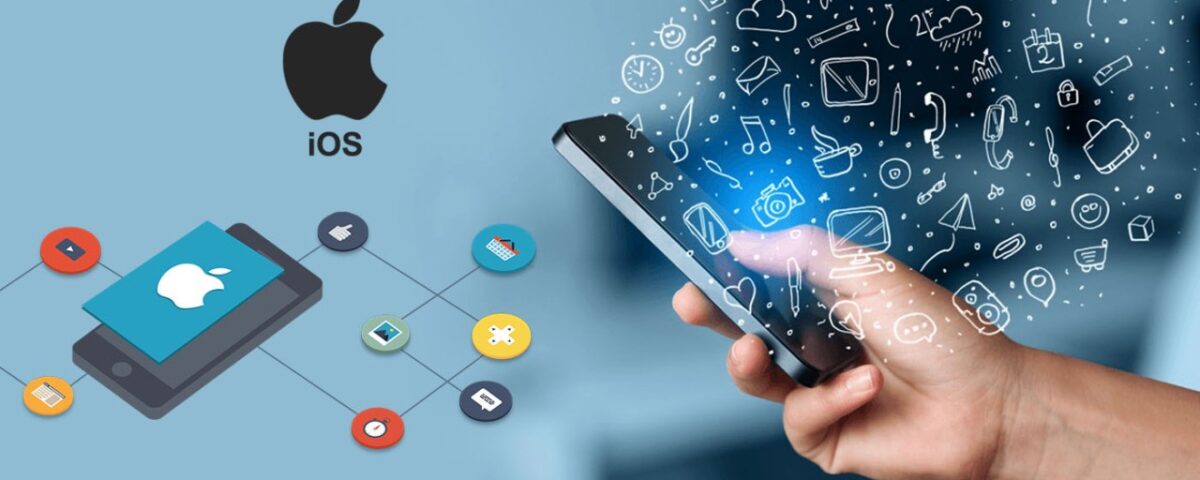iOS Development: Crafting Exceptional Mobile Experiences

Android Development: A Comprehensive Guide to Building Innovative Mobile Apps
May 25, 2024
Swift Programming: A Comprehensive Guide to Modern App Development
May 25, 2024iOS Development: Crafting Exceptional Mobile Experiences
iOS development has revolutionized the mobile app industry, enabling developers to create sleek, user-friendly applications for a global audience. With millions of apps available on the Apple App Store, iOS remains a dominant platform in the world of mobile technology. This blog delves into the essentials of iOS development, from its evolution and key tools to best practices and future trends.
Thank you for reading this post, don't forget to subscribe!The Evolution of iOS Development
The Beginning
The journey of iOS development began with the launch of the iPhone in 2007 and the subsequent release of the iOS SDK (Software Development Kit) in 2008. This allowed developers to create apps for the new platform, leading to the debut of the Apple App Store in July 2008, which featured 500 apps.
Significant Milestones
Over the years, iOS has seen numerous updates and enhancements:
- 2008: Launch of the App Store with 500 apps.
- 2010: Introduction of the iPad, expanding iOS to tablets.
- 2011: iOS 5 brought iCloud, enhancing data synchronization across devices.
- 2013: iOS 7 introduced a complete design overhaul with a flatter, more modern look.
- 2017: iOS 11 introduced ARKit, enabling augmented reality experiences.
- 2020: iOS 14 brought widgets to the home screen and the App Library.
- 2021: iOS 15 focused on improving FaceTime, notifications, and privacy features.
Key Tools for iOS Development
Xcode
Xcode is the official integrated development environment (IDE) for iOS development. It includes everything needed to create apps for iPhone, iPad, Apple Watch, and Apple TV:
- Code Editor: Supports Swift and Objective-C.
- Interface Builder: A visual design tool for creating app interfaces.
- Simulator: Allows testing of apps on virtual devices.
- Instruments: Performance analysis and debugging tools.
Programming Languages
- Swift: The preferred language for iOS development, known for its modern syntax and safety features.
- Objective-C: The original language for iOS development, still supported and used in many legacy apps.
SwiftUI
SwiftUI is a modern framework introduced by Apple in 2019, allowing developers to build user interfaces declaratively. It simplifies the process of creating complex UIs and works seamlessly across all Apple platforms.
Core Data
Core Data is Apple’s framework for managing the model layer of an application. It provides tools for managing object graphs, data persistence, and the lifecycle of data objects.
Combine
Combine is a framework for handling asynchronous events by combining event-processing operators. It provides a declarative Swift API for processing values over time, making it easier to manage asynchronous code.
Best Practices for iOS Development
Focus on User Experience
iOS users expect high-quality, intuitive apps. Follow Apple’s Human Interface Guidelines to ensure your app meets these expectations. Pay attention to details such as navigation, touch interactions, and visual feedback.
Optimize Performance
Performance is crucial for user satisfaction. Best practices include:
- Efficient Memory Management: Use ARC (Automatic Reference Counting) to manage memory efficiently.
- Reduce App Size: Optimize images, use asset catalogs, and enable app thinning.
- Smooth Animations: Ensure animations run at a consistent frame rate by minimizing work on the main thread.
Ensure Security
Security is paramount in iOS development. Protect user data by using secure networking protocols (HTTPS), encrypting sensitive information, and following best practices for authentication and authorization.
Regular Updates and Maintenance
Keep your app up-to-date with regular updates that introduce new features, fix bugs, and enhance security. Use user feedback and analytics to identify areas for improvement and ensure a high-quality app experience.
The Future of iOS Development
Artificial Intelligence (AI) and Machine Learning
AI and machine learning are increasingly integrated into iOS apps, providing personalized experiences and automation. Apple’s Core ML framework allows developers to incorporate machine learning models into their apps easily.
Augmented Reality (AR)
With ARKit, iOS has become a leading platform for augmented reality. AR is set to revolutionize industries such as gaming, retail, and education by providing immersive, interactive experiences.
Internet of Things (IoT)
The integration of iOS apps with IoT devices continues to grow, enabling smart home applications, health monitoring, and more. HomeKit and HealthKit are key frameworks for developing IoT-enabled apps.
5G Connectivity
The rollout of 5G will enhance the capabilities of iOS apps, enabling faster data transfer, lower latency, and more reliable connections. This will open up new possibilities for real-time applications, such as streaming and gaming.
Conclusion
iOS development is a dynamic and exciting field, offering endless opportunities for innovation. With the right tools, languages, and best practices, developers can create high-quality apps that provide exceptional user experiences. As technology evolves, staying informed about the latest trends and advancements will be crucial for success in the ever-changing world of iOS development.
For more information: www.ecbinternational.com


